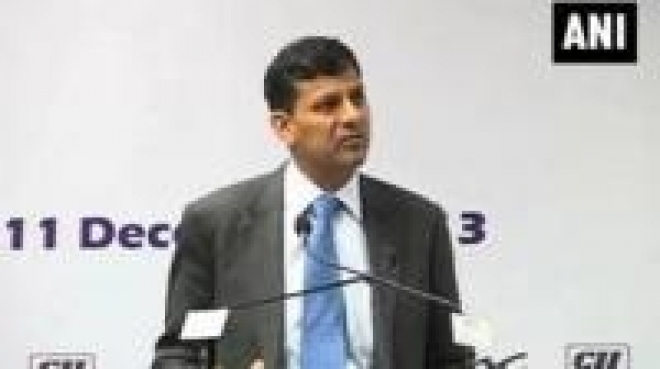
The head of the Reserve Bank of India (RBI) said on Friday that he - and not the government - was responsible for setting monetary policy, asserting his independence in taking a hawkish stance on inflation amid an election hinging on how to revive economic growth.
India's five-week long election is set to conclude on Monday, with results due on Friday. The opposition Bharatiya Janata Party (BJP) and its allies are leading in the polls after campaigning on a promise of reviving an economy expanding at its slowest rate in a decade.
Should the BJP win, analysts say RBI Governor Raghuram Rajan could come under political pressure to retreat from his hawkish stance on inflation.
"The key question is what kind of equation do you have with the government? I determine monetary policy, I say what it is," Rajan said at a conference in St. Gallen in eastern Switzerland.
"The government can fire me, but the government does not set monetary policy."
The RBI's governor and his deputies are appointed by the government - but they generally enjoy latitude in policymaking. However, Rajan's focus on inflation has also not been popular with the ruling Congress party.
Finance Minister P. Chidambaram on Thursday reiterated his stance that monetary policy decisions must take into account both price stability and economic growth, although he called for any new government to respect Rajan's appointment to the central bank.
Rajan on Friday reiterated his stance that bringing down inflation was key to growth and that India could one day emulate more developed economies such as South Korea, Japan, or China.
"To get sustainable growth, we have to bring down inflation. Once we get inflation down, then we can talk about the rest," Rajan said.
"I'm confident we can get back to the 8, 9 or 10 percent growth even though we're currently slowing down," he added. "I think over the next few years, with a stable government and the right kind of actions, we can still have that."
Since Rajan took the helm of the RBI in September, it has raised interest rates three times for a total of three-quarters of a percentage point.
Meanwhile, a central bank panel in January recommended making managing inflation its main policy objective, with a goal to explicitly target consumer price inflation of 4 percent, with a 2 percent band on either side.
Data on Monday is expected to show April consumer inflation to edge higher to 8.48 percent from a year earlier.

















